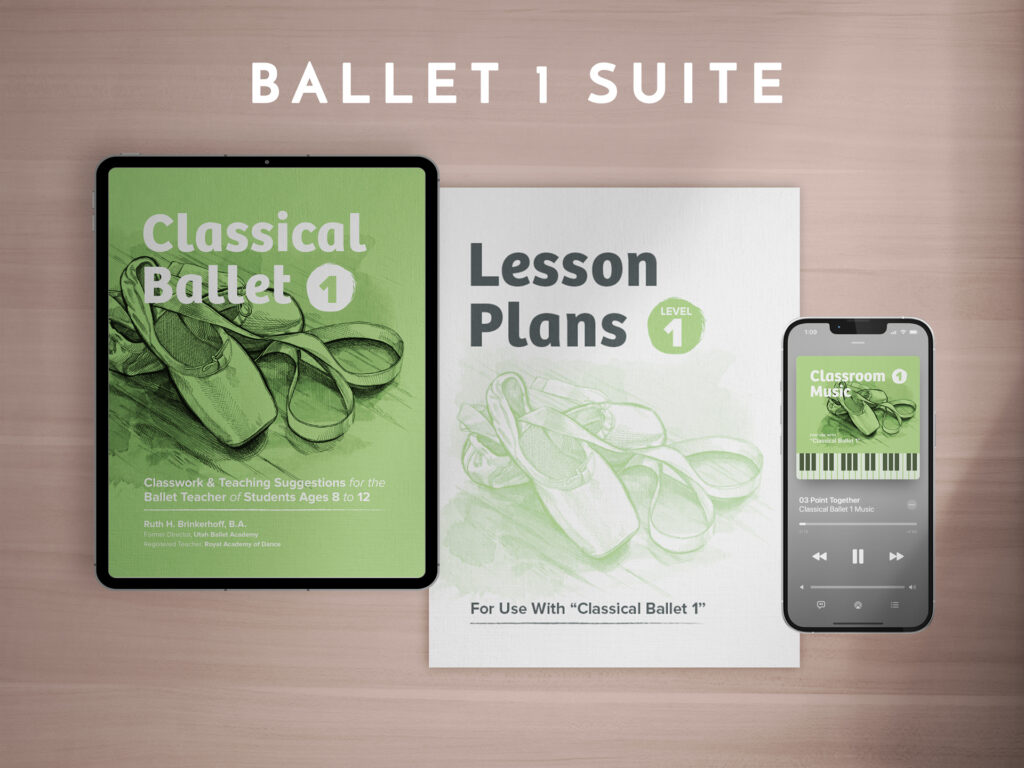Stepping into your ballet studio, you allow your gaze to fall over the group of 11 year olds lined up beautifully at the barre. After you give the first exercise, your dancers begin on cue with the music; each one executing the movements with the same skill level as the dancer beside them. Upon noticing general areas of weaknesses amongst the class, you offer corrections easily applicable to the entire class. All dancers proceed to implement your directions with the same degree of challenge and accomplishment. All is orderly. All is uniform. All is…..
A DREAM!!! What a lovely dream. Alas, it is a dream that will stay in dreamland, never to see the light of reality.
*sigh*
Actually, most teachers probably do not crave such a dream because most teachers thoroughly enjoy the work of connecting to the individual. We thrive on this challenge. It makes us better at what we do. If all students were the same, our job would be too easy, causing us to fall numb and lose interest. (Right?)
However, I am sure I am not the only one who walks into the following scenario nearly every single day:
I am waiting for the students to arrive. They come prowling into the studio the way dancers do. They are each unique people with unique challenges and unique strengths. Some love ballet, some are only there because ‘it’s what Mom told me I was going to do’. Some thoroughly grasp how to implement all the ingredients needed for a solid pirouette, some still haven’t quite mastered a relevé from two feet to one with proper technique engaged consistently. Some can speak ballet fluently, others know what pas de cheval means but that is the extent of their vocabulary and they only know that because they like horses so much.
I could go on. But I won’t.
The point is that we teachers, more times than not, must teach classes that hold a range of levels. A range so broad that sometimes it can seem near impossible to teach in a productive way. How do you ensure everyone is properly challenged? How do you keep the accelerated students from feeling bored? How do you keep the less advanced students from feeling overwhelmed? Is an inspiring class even possible in those situations where the levels have a distance so extreme? I firmly believe it is possible. I also believe it is hard. Very hard. As in, oh so very hard.
I humbly offer up some tools I have placed in my “This Class Is Really Hard To Teach Because No One Is At The Same Level!” toolbox. Perhaps these items can kickstart—or build upon – your own tools.
- Find out what they know. Whatever you have to do to make this happen, do it. Teaching people without a clear understanding of where their knowledge begins and ends is teaching blindly. It’s all fine and beautiful for a master class or a one-off type class, but not for when you must carry students through even several class sessions. Talk to them. Get in their brains. Hash out the information that is there. (Remember, how they dance may not accurately reflect what they know. Sometimes that mind/body connection hasn’t been adequately developed.)
- Keep barre straight-forward. Having a fancy barre can be fun, but it can leave the less advanced students confused and unable to keep up. This sets them up for a frustrating centre. By keeping barre work simple and direct you can challenge the tedious details to be in place for the upper levels while allowing the lower levels to concentrate on the basics.
- Give two different exercises. I teach a class of 12-14 year olds. Some are fully capable of doing intricate waltzes across the floor, others are just now accomplishing a simple waltz turn. I give two entirely different exercises. I have found this to be most productive.
- Create challenges. In one of my 5-10 year old classes we are working on chaîné. I would typically not introduce chaîné to 5 year olds, but it seemed suitable for this class due to the older ages. I give them different challenges to attempt. Once they achieve the first challenge, they may move to the second one and so forth. Ex: Begin with walking turns to make sure your body has the coordination down. Move on to making your steps a bit smaller, closer to 1st position. Now try to not let your heels touch the floor. Next try to keep your legs really long. Let’s move to standing on your highest demi pointe. Think about your turn out now. Move on to think about your body alignment. And so forth. This can be done with any age and with practically any step. It can also be done at any pace needed.
- Offer options. I am teaching flic flac en tournant to one of my classes. They have the choice to do a full en tournant or half. They also have the choice to stay flat or press up to demi pointe. Options put the power in their hands and it helps clue you in to how aware they are of their own abilities.
- Give a very challenging exercise. It might seem counter intuitive but I toyed around with this one and found it useful in some circumstances. I give a super challenging combination (usually in petit allegro—because it’s my favorite). It definitely holds a challenge for the advanced dancers (and has the capacity to add further layers of difficulty through battu, musicality, epaulement, reversing, etc). While the upper students are working it all out, I move to the lower levels and help them analyze the larger steps (What is the difference between glissade and sissonne? They are side by side in this combination. What knowledge do you have to apply to these steps so you can ensure you do them correctly?).
- Allow them to use their ballet smarts. This is a great tool for all ages. Ask for a volunteer to demonstrate the step/combination. Have everyone critique it. You can give them guidelines (only find the strengths/only find the weaknesses/find one strength and one weakness/only look at the port de bras/etc.), or you can let them critique however they are inclined. It opens up dialogue and teaches everyone a vast amount of things all at once. It also teaches you what you need to teach them.
- Ask questions, expect answers. Ask your students questions about technique. Expect them to answer with words and teach them the correct language to use. This can be a bridge between the levels because you might find that the less “talented” dancers have a stronger vocabulary simply because they have had to think harder than their friends with bodies more inclined towards ballet. Everyone can learn something from everyone and everyone has something to offer. This is important to highlight. It can also create a sense of unity and respect amongst the dancers. Always a great thing!
Ultimately we want to structure a class that moves each dancer forward at the pace best suitable for them. This is tricky and requires not so little thought. For me, I have found experimenting with these different approaches and ideas to be useful. I am not always successful, but I am confident enough to be able to switch course if something is going poorly. I recognize I will likely never have that dream class, but that is ok. My students are amazing humans who deserve a teacher ready to jump in head first and help them figure out this exquisitely complicated thing we call ballet. So that is what I aim to do.
Next time you walk into class and half of your class can stand in first position, a quarter of your class doesn’t know what first position is, the last portion of the class feels they are superior to first position, and that one little kid can’t even stand on both feet for two seconds put together without falling over—take a breath in, let it out, and onward you go into battle. A soldier fighting—and winning—to keep excellent ballet training alive.
Related Articles


Comments
No comments for this post.
Add Comment